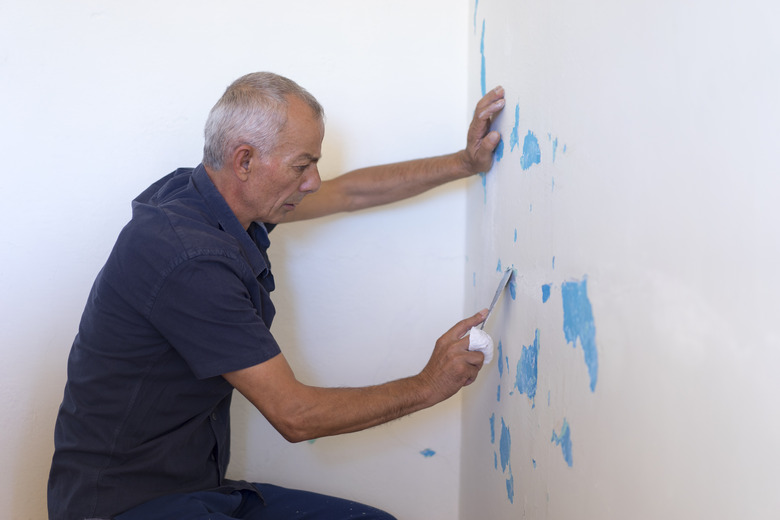Homemade Spackle
Spackling compound, often identified simply as spackle, is available at any hardware store, and it's inexpensive, costing about $5 for a pint container. Traditional spackle is a putty-like hole filler akin to joint compound, but modern products are made with vinyl, which makes them lightweight and fast-drying. You should really have a small container in your tool closet, but OK –you ran out, you're in the middle of a painting job and the store is closed. You can find spackle alternatives in your bathroom or kitchen. You could also simply use drywall joint compound, if you have any. It dries quickly and does everything spackle does and more.
Toothpaste as a Substitute for Wall Spackle
Toothpaste as a Substitute for Wall Spackle
Yes, that's right. You can use toothpaste to fill small nail holes prior to painting. We're not talking about gel-type toothpaste. The stuff you need is the old-fashioned white paste. You wouldn't want to use this to fill a hole larger than about one-eighth inch in diameter, but for holes left in the wall after you remove a picture hanger or a small screw, it will do the job. Force it into the hole with your finger and be meticulous about cleaning off the excess because it won't dry hard enough to sand. If the toothpaste is a close enough match to the wall color, you might not even have to paint over it if you don't want to.
Playdough Spackle
Playdough Spackle
Anyone who has hosted small children for any length of time probably knows about playdough. You mix flour, water and add a little salt, and the mixture can be shaped into figures that harden overnight. The recipe for spackle is a little different than that for playdough, but you still need flour and salt. Mix four tablespoons of flour and one-third tablespoon of salt, but instead of adding water to make the mixture malleable, add paint, primer or varnish.
This mixture is suitable for holes up to one-eighth to one-quarter inch in diameter and may even fill larger holes as well as cracks. If you use paint that's the same color as the wall paint, it will make a seamless repair that doesn't even need touching up.
Homemade Joint Compound and Patching Compound
Homemade Joint Compound and Patching Compound
Playdough spackle can often double as joint compound if you need to repair some lifting tape or touch up some texture. If you need something tougher to repair a larger hole, though, you may need to fortify it. You can do this in one of two ways. The first is to mix the flour/salt mixture with polyurethane varnish instead of paint. The resulting compound will dry hard in 24 to 48 hours.
The second way is to take advantage of the chemical reaction that occurs when you mix salt and flour in water. The reaction hardens the mixture, and the compound will be even harder if you use warm water and increase the amount of salt to a full tablespoon or more. Mix well until all the lumps are gone, and you'll be able to use it to patch holes up to an inch or more in diameter.
